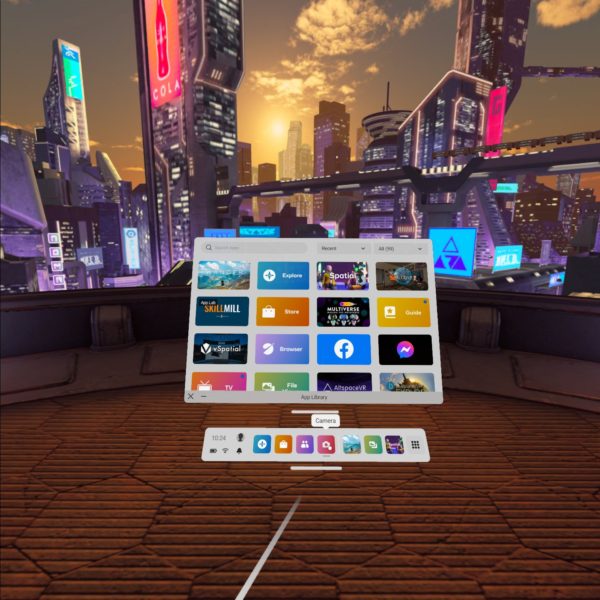
It can get a little crazy in a classroom when learners put on their headsets for the first time! They immediately see before them so many things to click on!!! They also want to share their emotional response to what they are seeing, out loud for everyone else to wonder at!
As a teacher it is so much fun to watch learners when they start to use VR – and those very first few minutes are absolutely priceless – to me anyway!!! It brings the same kind of thrilling emotion that you get when you experience one of those life changing “first” moments, like seeing your infant roll over for the first time, travel to a new country or experiencing a new culture, or graduating from college! Sharing the immersive experience is quite possibly the most important and emotionally rewarding experience I have had during my teaching career.
I have taught so many new technologies in the classroom over the decades, and I like to think that through those experiences I have a good grasp on classroom management, and the challenges of introducing new things! I share here my thoughts on how to manage the VR experience in the classroom.
Managing a classroom of people wearing virtual reality headsets can be a unique and challenging experience for both the teacher and the students. Here are some tips on how to effectively manage a classroom of people wearing virtual reality headsets:
Establish clear rules and expectations: Make sure to set clear rules and expectations for behavior while wearing virtual reality headsets. This could include guidelines on movement, communication, and appropriate use of the technology.
Provide clear instructions: Ensure that all students understand how to use the virtual reality headsets and any software or apps that are being used in the classroom. Provide clear instructions and demonstrations as needed.
Monitor student behavior: Keep an eye on students’ behavior while they are using virtual reality headsets. Be aware of any signs of disorientation, discomfort, or inappropriate behavior, and intervene if necessary.
Use collaborative activities: Consider using collaborative activities that require students to work together in virtual reality. This can help build teamwork and communication skills and can also be a fun way to learn.
Use virtual reality to enhance learning: Use virtual reality as a tool to enhance learning, not just as a novelty. Incorporate virtual reality experiences that align with your curriculum and learning objectives.
Consider accessibility: Keep in mind that some students may have difficulty using virtual reality headsets, such as those with certain disabilities or medical conditions. Consider alternative activities or accommodations for these students.
Overall, managing a classroom of people wearing virtual reality headsets requires careful planning, clear communication, and constant monitoring. With the right strategies in place, virtual reality can be an effective tool for enhancing learning and engagement in the classroom, not to mention a whole bunch of fun!!!!

